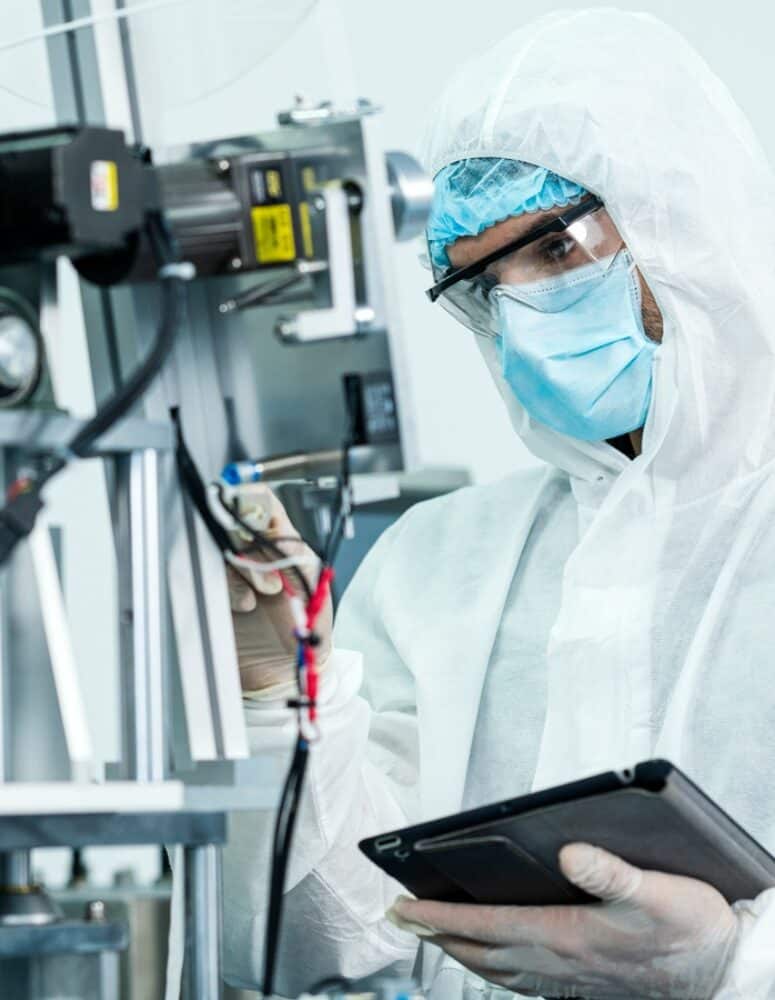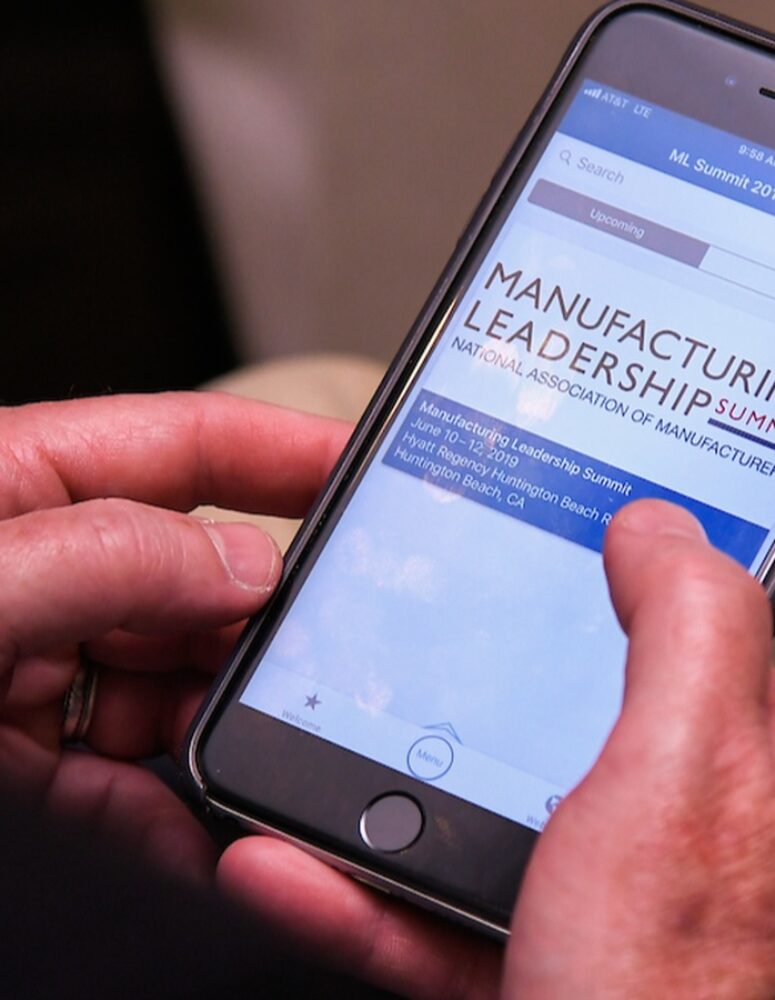Accelerating M4.0 with Legacy System Condition Monitoring
Manufacturing Leadership Journal content and MLC resources are exclusively available to MLC members. Please sign up for an account or log in to view this content.
A Digital Transformation Framework to Enable M4.0 Factories
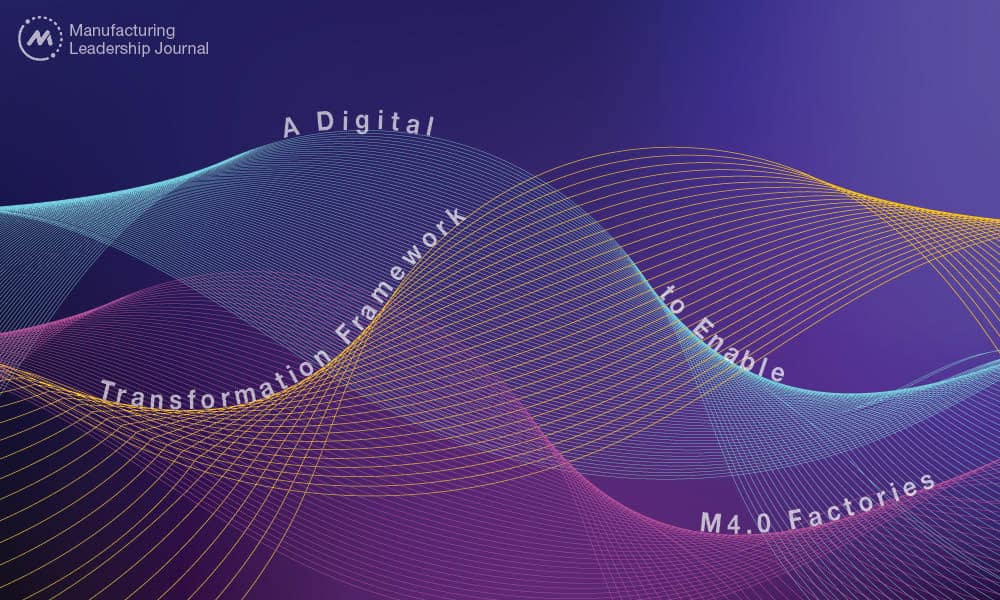
To get to where they’re going, manufacturers must first make an honest assessment of where they are.

Investing in smart factory technologies will become a key area of opportunity for middle market manufacturers looking to differentiate themselves, improve operating costs and stay ahead of the competition. Before ramping up their investment in and implementation of those technologies, though, companies need to have a digital transformation framework and roadmap in place to ensure a thoughtful and prioritized plan. This will allow those advanced tools and processes to work to their full potential.
Having such a roadmap will also help chief financial officers, chief technology officers and other executives identify key priorities amid a high price environment and looming recession, ultimately helping to improve efficiency and save money.
Key elements of a digital transformation framework include an understanding of where the company is in its digital maturity journey, as well as an understanding of M4.0 factories’ implications on the workforce of the future.
Building a Foundation
For many manufacturers, upgrading legacy systems is a central step to becoming a truly digital organization. This may involve upgrading enterprise resource planning systems and inventory management systems, which can enable more precise supply chain visibility. A broader shift to cloud-based IT systems can also allow manufacturers to realize lower risk and lower cost of ownership of the data that lives there.
Overall network architecture is another crucial part of the foundation. Companies will need to integrate historically siloed IT and OT infrastructures, as we wrote recently in this article. This will enable “more circular connectivity throughout operations, better security, continuous improvement in efficiency and, ultimately, growth.”

“Key elements of a framework include an understanding of where the company is in its digital maturity journey, as well as an understanding of implications on the workforce of the future.”
There are significant opportunities for middle market manufacturers to evaluate whether their current digital foundation will suffice in the increasingly connected future. Here are what the stages of a digital maturity model might look like, as RSM lays out in its digital strategy guide:
- Non-existent: “There’s little to no use of technology to facilitate daily operations.” Many processes and systems are manual and production is run largely by paper work orders. The use of automation is not widespread throughout the organization, and very little production data is available for relevant analysis.
- Basic: “There’s a limited use of digital solutions to perform specific tasks.” Some aspects of operations have been automated and/or digitized, and teams are using some operational data to inform decisions. The production floor is still highly manual. The foundational ERP system hasn’t been optimized for all processes but provides basic production data that can be used for retroactive production volume analysis.
- Market contender: “Most day-to-day tasks are facilitated through technology and managed through current systems.” Teams use technology to streamline and improve operations. A foundational ERP system and/or other advanced solutions allow teams to manage supply chain and operations more efficiently. The company can extract relevant data from multiple systems for analysis, but that analysis is still manually intensive and mostly retroactive. Predictive capabilities are still somewhat limited.
- Industry leader: “Competitors and similar organizations view your organization as the benchmark for digital maturity.” Teams leverage advanced software and solutions for shop floor automation and data gathering. Data is automatically integrated across systems and platforms and fed to the business via predictive capabilities, which steer operational performance and inform decision making.
- True innovator: “Your organization is on the cutting edge of technology and recognized as a digital pioneer.” The organization has implemented and trained its workforce on the use of predictive data analytics, machine learning and automation capabilities that allow for continual improvement throughout the operation. The company also has advanced supply chain visibility that allows precise supply and demand synchronization.
A third party can help in assessing where teams across the organization and across business functions fall along this digital maturity spectrum.
Security and Controls
Cybersecurity is another crucial foundational area for industrial companies looking to further their digital capabilities; organizations adopting advanced technologies need to raise the bar for how they protect their information. In the context of digital production and M4.0 factories, where more devices and operations are connected via one or multiple networks, the importance of cybersecurity is even higher.

“Today’s manufacturers need ‘new-collar’ workers who have more technical, advanced skills than traditional white-collar office workers or those in blue-collar jobs.”
When it comes to building cybersecurity for industrial control systems, companies should understand where there might be gaps in the four key areas of oversight, people, processes and technology.
- Oversight: Organizations need to have clear governance and strategies in place around the security of their industrial control systems and ensure that processes incorporate board and executive oversight on everything from understanding cyberthreats to navigating cyber insurance to coordinating with law enforcement in the event of a breach.
- People: People should also have a thorough understanding of the company’s protocols and security organization structure at the enterprise level.
- Process: Companies need to have consistent cybersecurity considerations built into all their processes to ensure not just physical security but also business continuity in the event of breaches.
- Technology: This includes security monitoring, threat modelling, intrusion detection and protection, endpoint security, data loss prevention and security architecture and design.
Labor Impact: ‘New-Collar’ Workers
There may be concerns from employees at all levels of the organization about how advanced technologies will change what day-to-day operations look like. But the main issue here isn’t technology replacing humans throughout the organization. Rather, it’s about how manufacturers should adjust the digital skills they seek out in potential employees, and how best to train existing employees to ensure they keep up with those skills, especially in the areas of analytics and automation.

“For true success, businesses need to evolve constantly and regularly question where there may be opportunities for improvement.”
“Today’s manufacturers need ‘new-collar’ workers who have more technical, advanced skills than traditional white-collar office workers or those in blue-collar jobs, especially in the areas of automation, analytics, robotics and the Internet of Things,” we wrote in early 2022. “While proficiency in machinery is essential, dual knowledge of analytics or advanced robotics is in high demand.”
Organizations will need to understand how this affects their recruitment and training strategies, as well as their investment priorities.
Questions to Frame the Path Forward
There are a few key questions that can help manufacturers chart a path toward ensuring they are M4.0 ready and will be able to use smart factory technologies to their full potential:
- What value do you believe these technologies could drive for your organizations?
- Where does your organization currently fit in the digital maturity journey laid out above? What are the reasons for its current position along that journey?
- What investments or plans will be needed to make this progress?
- What will the changing workforce landscape—and the increasing importance of digital skills—mean for your organization?
In many ways, endeavoring to become a truly digital organization is a never-ending project. For true success, businesses need to evolve constantly and regularly question where there may be opportunities for improvement. M
About the authors:

Jason Alexander is partner at RSM US LLP.

Daniel Wheadon is partner at RSM US LLP.

Jake Winquist is director at RSM US LLP.
Achieving Measurable Value through Data-Driven Manufacturing
“Data collection doesn’t equal success” and other observations from a powerful visit to EY’s Digital Operations Hub @ MxD
The Manufacturing Leadership Council recently partnered with EY for a two-day event focused on preparing for the future of manufacturing. Hosted at MxD in Chicago, Ill., the event focused on data-driven manufacturing and included a tour of EY’s Digital Operations Hub, several discussion panels and presentations, and a collaborative workshop.
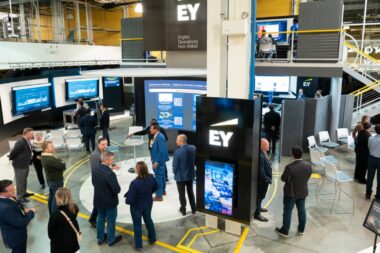
Diving deep into manufacturing at EY’s Digital Operations Hub: Day one featured a round-robin visit to a selection of experience modules within the EY Digital Operations Hub. Participants had the option to visit five of the hub’s 31 modules where they heard about topics including workforce upskilling, intelligent demand forecasting and planning, digital performance management, digital worker enablement, edge computing, and more.
As participants made their way around the Digital Operations Hub, led by EY’s Mark Heidenreich, who leads the Digital Operations Hub, EY’s expert team and partners shared a deep dive into each topic, demonstrating the latest technologies and thinking on this important array of manufacturing topics.
Focusing on the future: The second day of programming kicked off with a conversation between David Brousell, MLC’s Co-Founder and Executive Director, and Scott Dixon, EY’s Managing Director – Advanced Manufacturing Technology Leader. The topic at hand was MLC’s latest white paper, The Next Phase of Digital Evolution and what it tells us about the future of manufacturing.
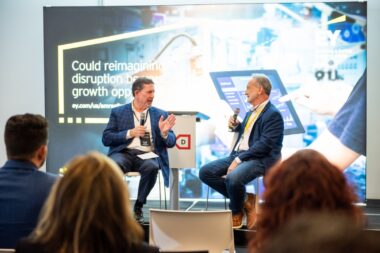 The two focused on data and its important role in manufacturing. While data may be difficult to get to – particularly on-demand – it is an important driver of decisions and value. However, they cautioned that data collection doesn’t equal success. Instead, Brousell and Dixon urged organizations to balance resilience while adding complexity. Brousell recommended that organizations not focus on data’s ability to “knock down silos.” That phrase, he warned, can be scary for subject matter experts. Instead, he recommended weaving silos together so that systems are integrated and domain expertise can be maintained.
The two focused on data and its important role in manufacturing. While data may be difficult to get to – particularly on-demand – it is an important driver of decisions and value. However, they cautioned that data collection doesn’t equal success. Instead, Brousell and Dixon urged organizations to balance resilience while adding complexity. Brousell recommended that organizations not focus on data’s ability to “knock down silos.” That phrase, he warned, can be scary for subject matter experts. Instead, he recommended weaving silos together so that systems are integrated and domain expertise can be maintained.
Becoming data-driven: Next up, the event covered the top challenges for data-driven manufacturing with a presentation by EY’s Sachin Lulla and Amy Burke, the Americas Consulting Sector Leader – Advanced Manufacturing & Mobility and Advanced Manufacturing & Mobility Markets Leader, respectively. With a survey of 400 manufacturing companies as its basis, the presenters shared how only 10% were experimenting with digital, while only six percent were tackling digital at scale.
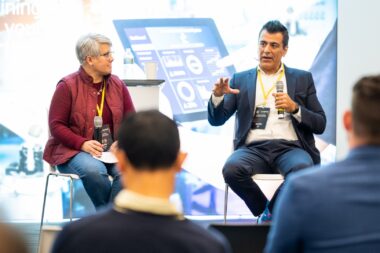 Throughout the conversation Lulla and Burke emphasized the need to put humans at the center of any transformation, building digitization and operational excellence around that core. For Lulla, the purpose of technology is to augment human intelligence. The pair agreed that starting with an end goal in mind is important when formulating a data strategy. The organization and employees need to know “the why” behind the data collection and use.
Throughout the conversation Lulla and Burke emphasized the need to put humans at the center of any transformation, building digitization and operational excellence around that core. For Lulla, the purpose of technology is to augment human intelligence. The pair agreed that starting with an end goal in mind is important when formulating a data strategy. The organization and employees need to know “the why” behind the data collection and use.
Further, Burke and Lulla recommended that organizations should not just look at gaps in their current workforce, but at what employee skills exist on the team and how upskilling and a learning environment can cultivate a fertile ground for data to be used successfully.
Driving digital with data: Pfizer’s Vice President of Digital Manufacturing, Mike Tomasco, was on hand to share how the pharmaceutical and biotechnology company uses data-driven decision making to create value. Tomasco shared how the company’s initial failures with capturing and using data led to significant successes and allowed Pfizer to move beyond pilot purgatory to large-scale transformation.
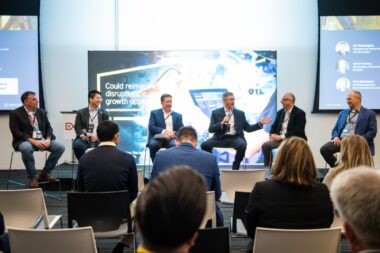 Moving beyond: The idea of moving beyond pilot purgatory was explored further to start the final panel discussion moderated by Brousell. Panelist Jim Fledderjohn, Dell’s Manufacturing Vertical Field Director, advised organizations to align pilots to the bigger strategic vision and fail fast. According to fellow panelist Terry Davenport, Rheem’s Executive Vice President, Global Operations, leaders should use the scientific method to learn from pilot projects and prove the value before scaling. From a collaboration standpoint, Microsoft’s Americas Regional Business Lead – Manufacturing, David Breaugh suggests that cross-functional teams help keep an eye on the big picture and unlock insights faster. Meanwhile, James Zhan, PTC’s Vice President, Market Development, IoT Solutions cautioned the audience not to focus solely on pilot purgatory and to be sure to keep an eye on workforce skills purgatory.
Moving beyond: The idea of moving beyond pilot purgatory was explored further to start the final panel discussion moderated by Brousell. Panelist Jim Fledderjohn, Dell’s Manufacturing Vertical Field Director, advised organizations to align pilots to the bigger strategic vision and fail fast. According to fellow panelist Terry Davenport, Rheem’s Executive Vice President, Global Operations, leaders should use the scientific method to learn from pilot projects and prove the value before scaling. From a collaboration standpoint, Microsoft’s Americas Regional Business Lead – Manufacturing, David Breaugh suggests that cross-functional teams help keep an eye on the big picture and unlock insights faster. Meanwhile, James Zhan, PTC’s Vice President, Market Development, IoT Solutions cautioned the audience not to focus solely on pilot purgatory and to be sure to keep an eye on workforce skills purgatory.
The panel also tackled the topic of data measurement, with Fledderjohn urging organizations to be selective about what data they collect – a proactive strategy that will help ensure the data is used and useful. Any process should have a metric that makes things faster, safer, eases worker burden, and offers higher quality and cheaper outputs, added Davenport. To that end, panelist Steve Pavlosky, GE Digital’s Vice President of Product Management, shared that GE shifted its technology roadmap to help customers move data into a single system so operators could make decisions quicker.
Capping it off with idea sharing: The event was capped off by a series of collaborative breakout sessions during which participants brainstormed go-forward ideas and feedback around the topics covered throughout the course of the entire event. Beyond the content that participants absorbed throughout the event, the breakouts gave them a chance to add their own two cents to the discussion, share their own experiences, and take away new perspectives that can be applied to their organizations.
Visit https://www.mxdusa.org/partners/ey/ to learn more.
All photos courtesy of EY.
Found: The Hidden Value in Manufacturing Operations
Manufacturing Leadership Journal content and MLC resources are exclusively available to MLC members. Please sign up for an account or log in to view this content.
Four Ways Connectivity is Transforming Manufacturing
Manufacturing Leadership Journal content and MLC resources are exclusively available to MLC members. Please sign up for an account or log in to view this content.
How Digital Manufacturing Creates Business Opportunities

It’s time to think way outside the proverbial box, according to the Manufacturing Leadership Council, the NAM’s digital transformation arm. In fact, as we get closer to 2030, manufacturers are creating entirely new boxes—including new digital business models, products and services, revenue streams, ways to serve customers and opportunities to increase competitiveness.
Collaborative innovation: By 2030, metaverse technologies will provide rich virtual environments for the collaborative development of new ideas. These shared virtual spaces will enable contributors from multiple remote locations to collaborate in real time.
- These collaborations may include manufacturers, partners, academic institutions and research institutes.
- New concepts can be tested in a virtual world before moving to physical prototyping or production.
Outcome-based products and services: As digital platforms mature and products become increasingly smart and connected, the decade ahead may see a boom in more outcome-based services. This is where the customer doesn’t buy a physical product, but instead signs up to pay for the guaranteed outcomes that product or system delivers.
- This shift will require manufacturers to establish new infrastructure rich in predictive analytics, remote communications and consumption monitoring.
- It also requires a mindset change for traditional manufacturing, from a focus on units and costs to product lifecycles, performance levels and usage.
Blockchain networks: By 2030, blockchain could be leveraged for most world trade, helping to provide the secure traceability and provenance needed to prevent physical product counterfeiting, grey markets in medicines and even the adulteration of the global food supply chain.
- A blockchain is an electronically distributed ledger accessible to multiple users. Blockchains record, process and verify every transaction, making them safe, trusted, permanent and transparent.
- Blockchain technologies promise to be a viable solution to manufacturers’ need to automate, secure and accelerate the processing of key transactions across industrial ecosystems.
E-manufacturing marketplaces: Digitally empowered production-line adaptability, such as the kind that emerged during the pandemic, will provide a foundation for companies to offer spare production capacity to other companies in different sectors.
- This maximizes the return on a company’s production-line investments and can generate new revenue streams for the future.
- Combined with e-commerce, e-manufacturing will enable designers, engineers and/or smaller companies to more easily connect with a large pool of qualified producers to deliver and scale a final product.
Manufacturing in 2030 Project: New Boxes is just one of the industry trends and themes identified by the Manufacturing in 2030 Project, a future-focused initiative of the MLC. For more details on megatrends, industry trends and key themes for Manufacturing in 2030, download the MLC’s new white paper “The Next Phase of Digital Evolution.”
Top Manufacturing Tech Trends of 2022

Now that 2023 is here, we’re looking back on 2022’s top tech trends in manufacturing. The NAM’s digital transformation arm, the Manufacturing Leadership Council, and its innovation management division, the Innovation Research Interchange, gave us an overview.
AI everywhere: From automatically responding to shifts in production demand to anticipating breakdowns in the supply chain, artificial intelligence showed up more than ever before throughout manufacturing operations.
- More than two-thirds of manufacturers are either using AI now or will be doing so within two years, according to MLC research.
- Current use cases include predicting needed maintenance for equipment, forecasting product demand and monitoring performance metrics such as productivity and efficiency. Future use cases could include fully autonomous factories that run continuously with minimal human intervention.
Training on demand: Training for technicians and frontline operators used to mean time in a classroom with a live instructor. In 2022, more manufacturers turned to virtual, on-demand learning tools that allowed workers the freedom to learn at their own pace.
- This ran the gamut from video content libraries to immersive augmented reality/virtual reality experiences that guide and correct trainees.
- In 2023 and beyond, this type of learning experience will be essential to attracting and retaining younger workers who are familiar with digital learning and want the latitude to gain new skills on their own schedules.
Digital twins: Manufacturers used digital twins—virtual models designed to reflect a physical object, system or process accurately—to create design prototypes and test their performance.
- Digital twins will continue to allow for new levels of design optimization, improved product development and performance and significant waste reduction for manufacturers.
Robotic collaboration: Once confined to steel cages and bolted to floors, industrial robots took center stage in 2022.
- No longer limited to repetitive tasks and kept far from human workers, new-generation robots are safe enough to work alongside employees, can be moved quickly around shop floors and are programmed easily to do multiple tasks.
- Since they’ve also become more affordable, they’re an economically feasible investment for companies of all sizes.
Cybersecurity as safety: A rise in connected factories also meant a rise in cyberattacks on manufacturers. In an industrial setting, a cyberattack can be very dangerous, as it can cause equipment to malfunction.
- Last year, more companies began addressing the threat with cyber drills, tabletop exercises for simulated attacks and other training exercises designed to keep businesses—and workers—safe and secure.
Low-code/no-code development platforms: In 2022, more manufacturers embraced the use of mobile and web apps to build applications quickly. Using these platforms, enterprise and citizen developers can drag and drop application components and connect them to create apps—without line-by-line code writing.
- Business teams with no software development experience built and tested applications without any knowledge of programming languages, machine code or the development work behind a platform’s configurable components. We can expect to see more of it this year.
Smart glasses move beyond the pandemic: Many manufacturers kept up their pandemic-era use of smart glasses, which they had used to troubleshoot issues on the ground when travel was restricted and engineers and technicians couldn’t reach sites.
- They also expanded smart glasses’ use to include scanning sensor data so users can see visual data “mapped” onto equipment to better identify issues and fixes.
Interested in learning more? Check out the MLC and IRI for more insights into manufacturing’s exciting, high-tech future.
Sustainability Is a Top Manufacturer Priority, Survey Shows
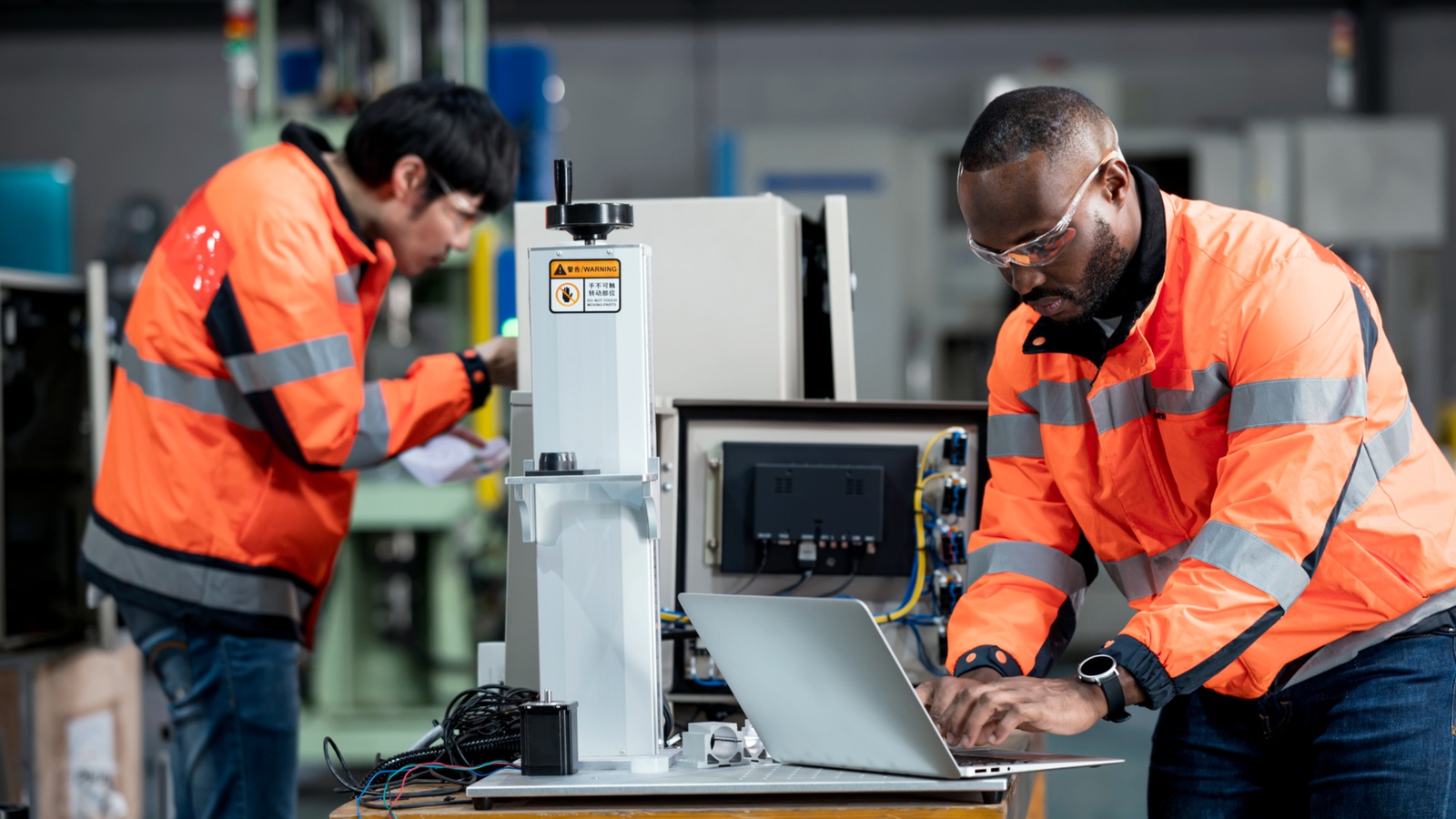
Manufacturers are pursuing sustainability like never before.
That’s according to recent polling conducted by the Manufacturing Leadership Council, the NAM’s digital transformation division. The annual Sustainability and the Circular Economy research survey seeks to determine the progress made in sustainable manufacturing.
Competitiveness: There has been a surge in the number of manufacturing executives who view sustainability as critical to the future of their businesses.
- 58% of respondents in 2022 believe sustainability is essential to future competitiveness compared to 38% in 2021.
- 68% of executives say they are implementing extensive, corporate-wide sustainability strategies. That’s up from just 39% in 2019.
What’s driving change: The motivations go beyond regulatory compliance and cost savings.
- 78% say sustainability is about better alignment with corporate values.
- 68% believe in creating a cleaner, healthier environment.
- 66% seek to improve company reputation with customers and investors.
Top corporate goals: More than half of survey respondents reported having specific sustainability goals and metrics across almost all key functions in the company.
- Goals were most apparent in manufacturing and production (79%), supply chain (69%) and product design and development (67%).
- Additional goals were cited in transportation and logistics (56%) and partner compliance (51%).
Energy efficiency is No. 1: The primary sustainability focus of manufacturers, according to survey results, is energy efficiency and reduction, combined with the transition to renewable energy sources. These efforts are linked intrinsically to meeting net-zero emissions goals.
- 45% of respondents report having announced formal net-zero goals.
- 30% aim to hit net zero by 2030.
Digital tech, employee training play a role: Also on the rise is the number of companies that recognize the importance of digital solutions in their sustainability efforts.
- These tools are being used to manage and monitor materials and energy consumption, optimize operations to improve efficiency and report sustainability progress.
- Respondents also say meeting sustainability targets must include engaging employees through education and training, as well as greening their supply chain.
The last word: An overwhelming 90% of all respondents agree that manufacturing has a special responsibility to society to become more sustainable and accelerate the transition to a future circular industrial economy.
Interested in putting some renewable energy solutions into action, including solar power, battery storage and LED lighting? Programs from utility companies and other entities enable efficiency upgrades with little or no upfront capital. Connect with NAM Energy to explore your options!
Effective Communication – The Start-Up’s Biggest Challenge
 If you were looking for a dose of optimism to counter the troubling reality of the post-pandemic world, you could do a lot worse than turn to the start-up community. Even in the best of times, the odds are stacked ruthlessly against anyone considering starting a business. And these are hardly the best of times. Yet new ideas and the magic combination of hope and conviction that supports them, continue to pour forth in a torrent. According to the U.S. Census Bureau, Americans started 4.3 million businesses in 2020, a 24% increase from 2019, and by far the biggest number in a calendar year in the previous decade and a half.
If you were looking for a dose of optimism to counter the troubling reality of the post-pandemic world, you could do a lot worse than turn to the start-up community. Even in the best of times, the odds are stacked ruthlessly against anyone considering starting a business. And these are hardly the best of times. Yet new ideas and the magic combination of hope and conviction that supports them, continue to pour forth in a torrent. According to the U.S. Census Bureau, Americans started 4.3 million businesses in 2020, a 24% increase from 2019, and by far the biggest number in a calendar year in the previous decade and a half.
As an investor, and a mentor for Creative Destruction Labs (CDL) I meet a lot of founders, and I watch a lot of introductory pitches. And while the enthusiasm is ever-present, it is not uncommon, after the founder has left the room, for those who have just watched the pitch to turn to one another and say something like: “I still don’t know what they actually do.”
The effective communication of a new product’s value and function is, I believe, the biggest challenge facing any start-up founder. This is about knowledge transfer. It is a prerequisite of every progressive step the company hopes to take. And it is particularly difficult for companies that are bringing to market – either as a core product or as part of a wider service or solution – a complex mechanical object (CDL focuses on science and technology start-ups).
These founders have to convince investors to fund their project; they have to explain defensible intellectual property to patent attorneys and granting authorities; they have to communicate requirements to sub-component suppliers and manufacturing partners; they need to convince buyers and users that the product can deliver; they must ensure anyone responsible for maintenance and repair knows exactly what’s required to keep it operational.
That is a broad audience, each with a specific set of knowledge transfer needs. So to be effective, communication needs to be highly versatile, and to deliver absolute clarity through the most efficient processes. If this capability isn’t baked into the organization from the outset, the best case scenario is that the challenge scales as the company becomes successful, creating a much bigger problem which can have a direct impact on operational KPIs.
As products come to market they bring with them a host of documentation and content requirements associated with that knowledge transfer. Creating and maintaining this content is a huge task and one that can easily become a bottleneck. If the content isn’t ready, the product can’t be promoted or sold. If it isn’t completely accurate, if it’s hard to access, if doesn’t tell the full story, you could be looking at fabrication or maintenance errors and costly downtime.
Advances in manufacturing technology – the adoption of agile workflows and additive manufacturing – actually make things worse. These processes accelerate product development and iteration, making the documentation and content bottleneck even more damaging.
Macro realities compound the problem yet further. Once upon a time a new company would start by bringing a core team together at a new premises. However, full-time, on-site work looks like a thing of the past. Studies suggest 70% of the workforce will remain working remotely five days per month by 2025 with others opting to work part-time on-site and part-time at home. And, in any case, start-ups tend to rely on a distributed ecosystem of product and service suppliers from the outset, for obvious reasons.
And according to a 2020 McKinsey report, Unlocking growth in small and medium-size enterprises, SMEs have innate productivity challenges, exacerbated by lack of access to high-cost enterprise software solutions. So, to ensure effective communication – to give themselves the best possible chance of success – start-ups today must find a way to drive effective teamwork and collaboration among a distributed workforce and ecosystem, at an affordable price point, all while driving productivity, in order to become competitive.
No pressure.
But start-ups have an advantage. Their primary strength in addressing these challenges is their capacity for continuous innovation, not just in terms of products and services but also – crucially – in terms of processes. This owes a huge amount to that optimism which got them started on the journey in the first place. According to McKinsey, “Because they are unhindered by legacy systems and outdated strategies, new market entrants are often able to rethink established practices and cut through traditional industry boundaries.”
Here’s a great example: Impossible Sensing is a CDL alumnus that develops and manufactures autonomous exploration tools designed to function in extreme environments from deep ocean to deep space. Their products are used to detect valuable minerals in off-planet environments. Prior to the pandemic, Impossible Sensing’s founder used 3D-printed models to enable prospective buyers – a Mars scientist at NASA, for example – to get a tangible sense of the firm’s products.
Restrictions on face-to-face meetings put an end to that, leaving this CEO suddenly missing a key part of his sales pitch. He overcame this by using interactive 3D communication which allows customers to play with the 3D models of his product (the closest thing to handling that 3D-printed object) wherever they were located. Video calling is great for replicating the conversation, but there are a number of critical communication experiences that it simply cannot deliver.
Many people might have focused on the frustration of being unable to continue to operate as they had before. But the start-up’s optimism will always find another way.
A start-up’s Big Idea is only as good as the extent to which it can be understood by everyone whose participation is required to make it successful. Get in front of that effective communication challenge as early as possible – solve that knowledge transfer problem across the board – and not only will you be giving yourself the best possible shot at success, you’ll be future-proofing your business against problems which can undermine you as you grow.
 About the author:
About the author:
Patricia Hume is Chief Executive Officer of Canvas GFX.
Exploring Sustainability and Resilience at Schneider Electric’s Smart Factory
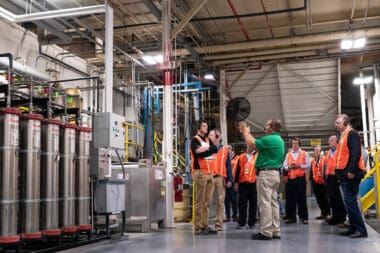 About 100 Manufacturing Leadership Council members, associate members, guests, and staff descended on Lexington, Ky., in November for a tour of Schneider Electric’s smart factory – a 65-year-old brownfield facility that showcases artificial intelligence, augmented reality, remote monitoring, and predictive maintenance.
About 100 Manufacturing Leadership Council members, associate members, guests, and staff descended on Lexington, Ky., in November for a tour of Schneider Electric’s smart factory – a 65-year-old brownfield facility that showcases artificial intelligence, augmented reality, remote monitoring, and predictive maintenance.
The factory was recognized in 2020 as a Fourth Industrial Revolution Advanced Lighthouse by the World Economic Forum (WEF) and later as a Sustainability Lighthouse, one of only ten globally and the first of two for Schneider Electric. It is one of several Schneider Electric factories to achieve this designation, and the company’s first on U.S. soil. Schneider Electric, a 180-year-old company, had E28.9 billion in revenues in its 2021 fiscal year. The company provides industrial automation and control, energy management, and building automation and control products and services.
What They Saw: During the 11-stop tour, participants experienced the complete breadth of Schneider Electric’s manufacturing process. The Lexington smart factory houses a complete, vertically integrated process including a typical assembly line, conveyance, fabrication center, paint room, and more – all connected through Schneider Electric’s Industrial Internet of Things-based (IIoT) EcoStruxure platform.
The tour showcased how Schneider Electric’s digital transformation increased energy efficiency and reduced downtime. AVEVA and Schneider Electric partner on integrated digital transformation solutions that bring together energy management and automation tools with industrial software. In Lexington, the company utilizes both its EcoStructure and AVEVA platforms throughout the facility. For example, at tour stop nine participants saw how the EcoStructure Lean Digitization System calculates true labor efficiency with e-performance and e-andon — digital data-sharing and production monitoring of performance and defects for immediate response. Meanwhile at stop seven in the paint room, the group learned how AVEVA Edge processes data and populates the company’s dashboards in real-time.
In a fascinating application of AI and machine learning, the company has set up a 5G networked camera to photograph and analyze every link in the mile-long conveyer chain. The photos are then automatically compared to thousands of images of broken and unbroken chain links, and the AI-powered system identifies broken and breaking links that need to be repaired and relays this information to the operator.
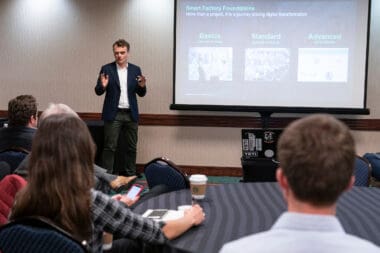 Insights from Digital Subject Matter Experts: Beyond the smart factory tour, participants joined breakout sessions where they heard directly from Schneider Electric experts about hardware and software tools used in the company’s digital transformation journey to help breakdown data silos and empower employees to make effective decisions at the gemba – the real place where they do their work. Breakout topics included Smart Factory Execution, EcoStruxure Deep Dive, EcoStruxure & Industry Automation, Cybersecurity and Operations, Advanced Analytics in Supply Chain, and Supply Chain Sustainability.
Insights from Digital Subject Matter Experts: Beyond the smart factory tour, participants joined breakout sessions where they heard directly from Schneider Electric experts about hardware and software tools used in the company’s digital transformation journey to help breakdown data silos and empower employees to make effective decisions at the gemba – the real place where they do their work. Breakout topics included Smart Factory Execution, EcoStruxure Deep Dive, EcoStruxure & Industry Automation, Cybersecurity and Operations, Advanced Analytics in Supply Chain, and Supply Chain Sustainability.
Unfettered Access to Company Leaders: The day ended with a discussion panel during which Schneider Electric leaders answered questions from both the audience and moderator, Jeff Puma, MLC’s Content Director. The panel featured Greg McManaway, Business Process Leader; Fabrice Meunier, Vice President, Industrial End User, System Integrator and Software Business; Anand Varahala, Environment and Sustainability Manager; and Bharat Virmani, Vice President, Supply Chain Performance and MTS/MTO Cluster. The panelists shared their insights on topics including the factory’s digital transformation journey, the WEF Lighthouse process, setting priorities, and scaling digital advances.
A Chance to Rub Elbows: In addition to witnessing the innovations and smart factory implementation at Schneider Electric’s Lexington facility, the tour offered an opportunity to interact with nearly 100 industry leaders in attendance including digital pioneers from both the host company and other MLC member companies. Like all MLC tours, the formal and informal networking opportunities allowed participants to ask questions, discuss hurdles, and seek solutions from other participants on the digital transformation journey. These relationships are invaluable to members’ efforts to expand their connections and Manufacturing 4.0 understanding.
Learn more about upcoming MLC plant tours
All photos by Ian Wagreich; Copyright: capitolhillphoto.com

